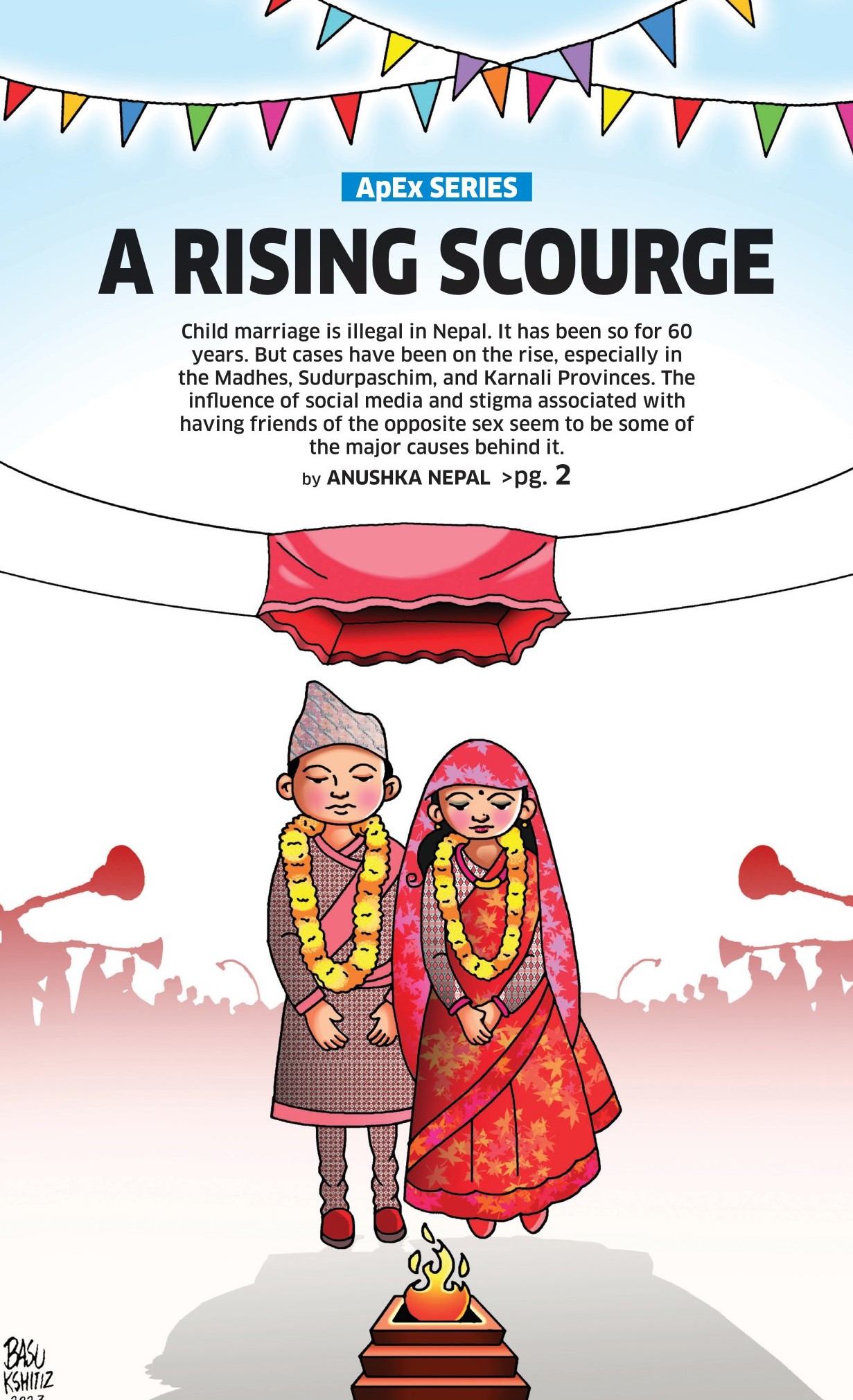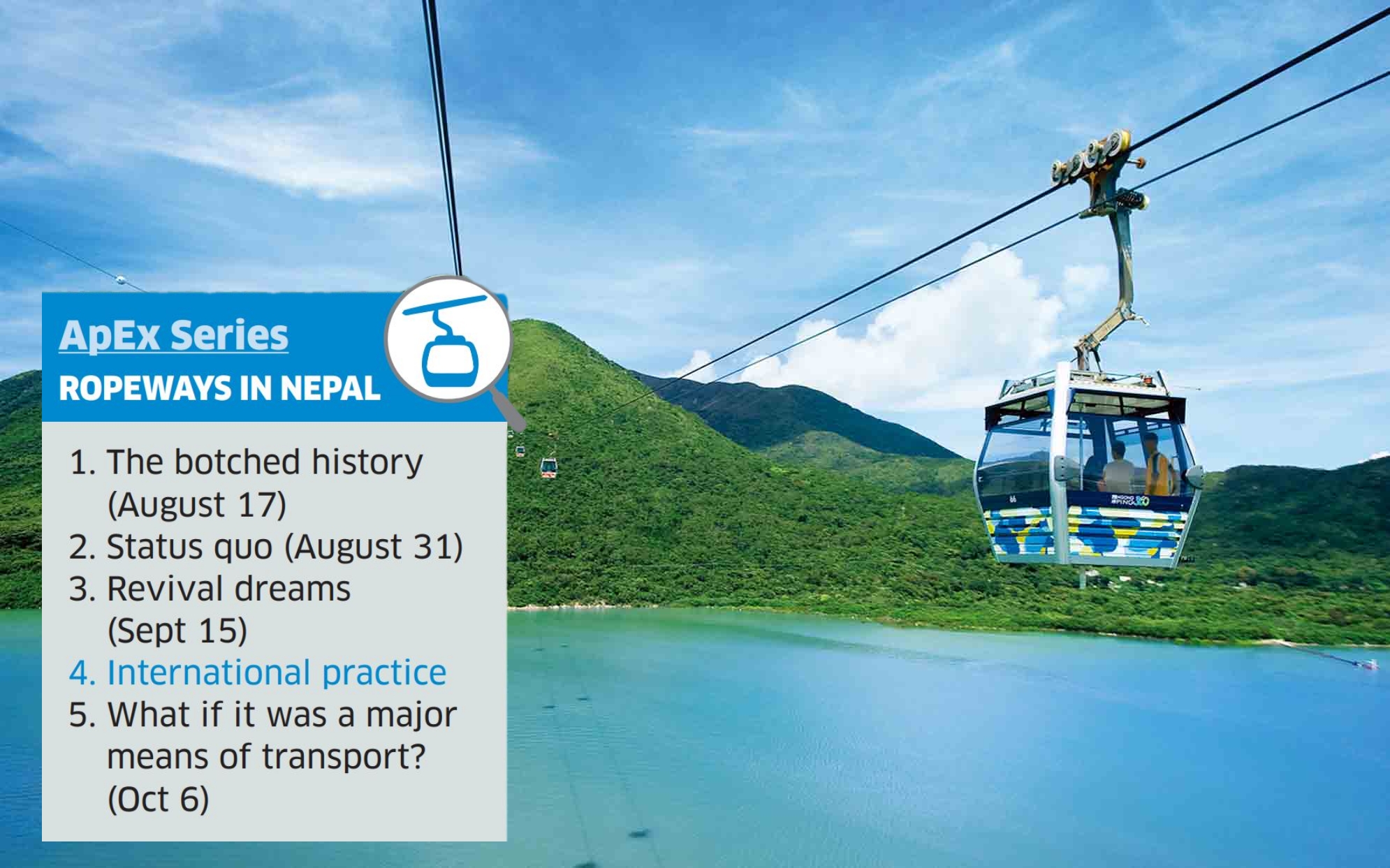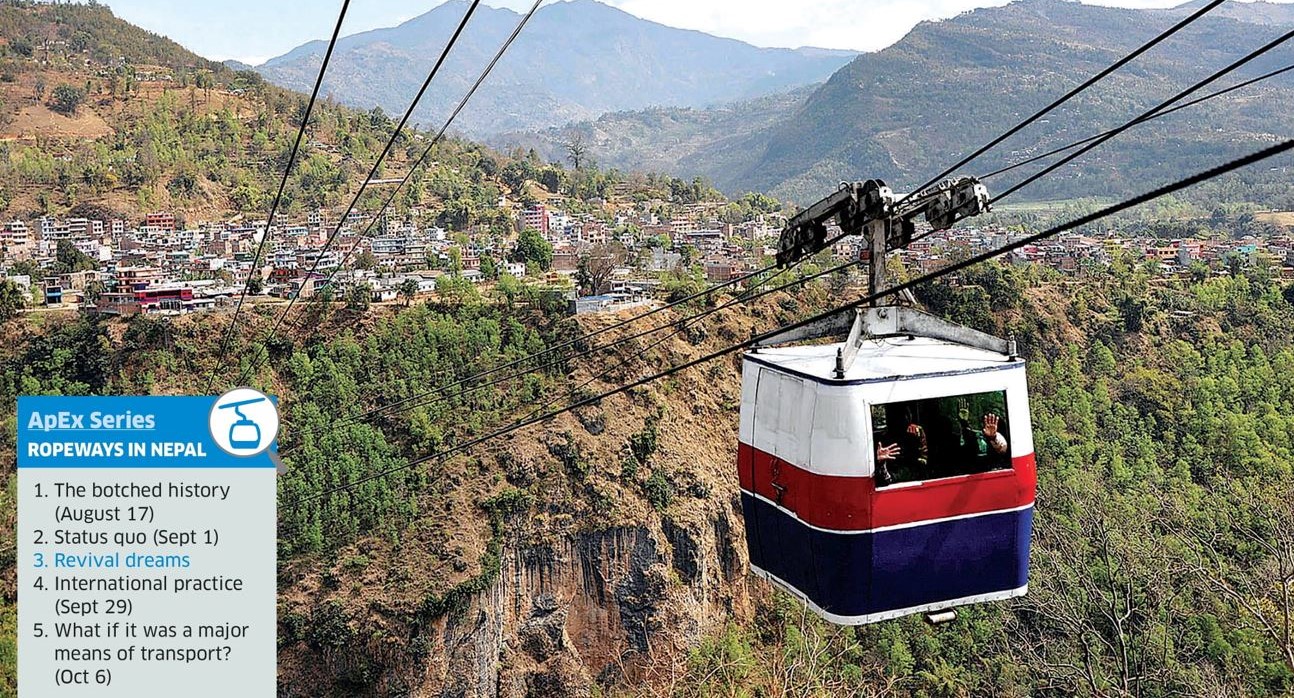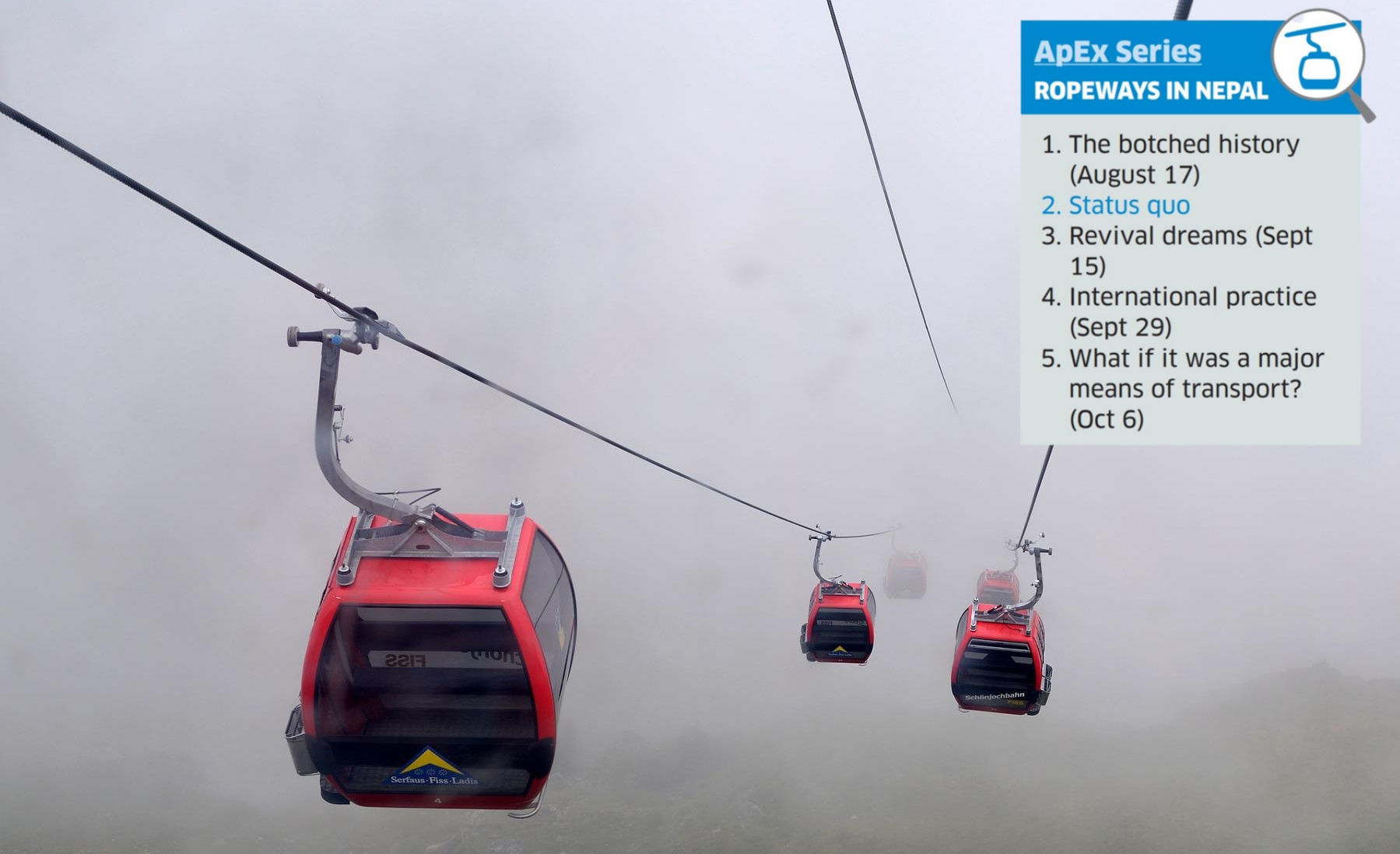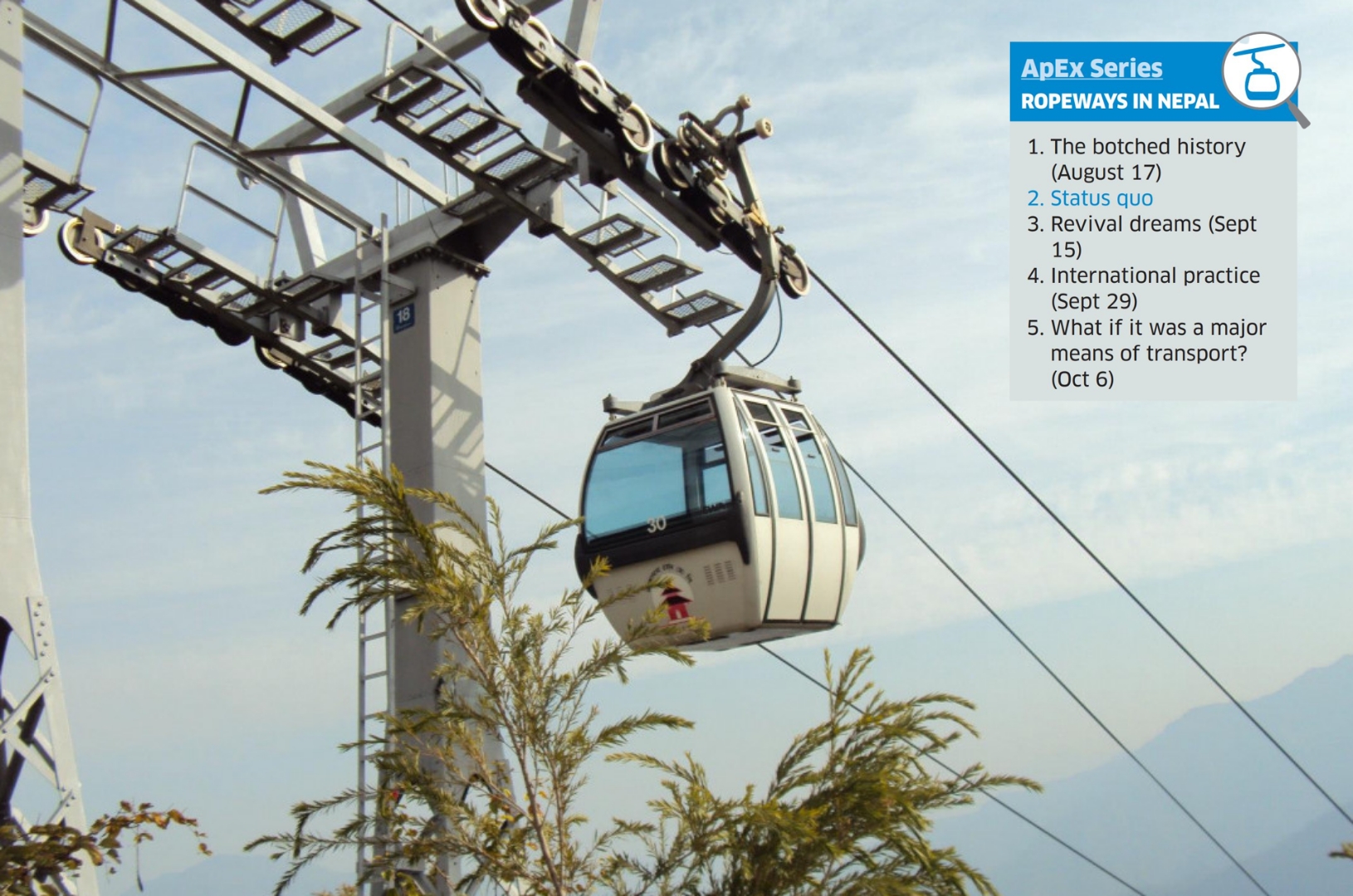Girls who marry early face abuse and health issues
The impacts of child marriage are plenty and far-reaching. Dr Richa Amatya, psychiatrist, says psychological problems in child marriage start with adjustment issues, which is mostly true for the brides. “They find it difficult to adjust in a completely new environment,” she says. Ruby Khan, activist, says the girls are blamed for not handling the family well and that adds to their woes. “Families aren’t empathetic toward her. They choose to verbally and physically abuse her rather than understand what she might be going through,” she says. Khan further mentions that the bride’s condition gets even worse when dowry is involved. Rajkumar Mahato, chairperson, Chandranagar Rural Municipality, Sarlahi, Province two, agrees the groom’s family isn’t always satisfied with the money/property received as dowry. “The bride is forced to ask more from her parents,” he says. They want the bride’s family to cover the cost of their son’s education, buy him a vehicle, and even pay for the cost of sending him abroad. “In case a bride fails to do so, she is physically assaulted, tortured, or, worse, killed,” he says. There is, however, a reason why they don’t walk out, says Khan. Most girls she has encountered have been stripped of their hopes and dreams of having a career. “They leave their education mid-way or parents don’t even let them go to school in the first place, thinking she will get married anyway,” she adds. They have neither any skills nor education to find a job or make a living. On top of that, they already don’t have any money. “Being completely dependent on the husband and his family for survival they have no choice but to endure violence,” she says. Dr Amatya adds that sometimes they also put up with abuse hoping things will turn around. “Many believe that people might change and treat them well if they wait a little longer,” she mentions. Secondly, they also fear that the situation might get worse if they speak up. “Compartmentalizing their problems is one of the root causes of psychological issues, which only gets worse with time,” she says. She further mentions that sometimes mental health issues can be genetic. Living in an abusive environment adds to their already existing issues, leading to chronic depression, anxiety, and other problems. Some of them even resort to substance abuse or worse. “Young girls getting married to much older men is another problem,” says Nisha Paudel, Surkhet district coordinator for Aawaaj, an organization actively working against child marriage. Khan says when the husband passes away, the wife, who is still young, is often emotionally and physically tortured by her in-laws. Some are even blamed for killing their husbands. “They are accused of witchcraft or bringing bad omens,” she adds. In some cases, the husbands choose to get a divorce. “I have mostly seen that happen in Muslim communities,” says Khan. The girl is then responsible for singlehandedly raising her children. “She is kicked out of the house and her own family doesn’t want her to return.” Sangita BK, social mobilizer for Aawaaj, says the problem of the age-gap is also seen in second marriages. “Remarrying is already frowned upon by many and the family doesn’t treat them well either,” she says. The most common reason for remarrying, she says, is because single mothers look for emotional as well as financial support to raise their children. “They have no choice but to endure the misbehaviors in order to have a roof over their heads,” adds BK. The situation is even worse for children from their first marriage. “Our society doesn’t easily accept a step-child,” she says, “And the mother asks them to compromise along with her in case the child is abused since they have nowhere else to go.” She further mentions that it’s usually the stepdaughters who suffer the most. A few years back, a 14-year-old girl was found to have been abused by her stepfather for years. It began with inappropriate touching and led to rape. The stepfather, without her knowledge, made her undergo multiple abortions. At the age of 14, she got pregnant again, but the abortion wasn’t successful. She gave birth and had several health complications after it. “Girls have a lot of health complications when they get pregnant very early,” says Manju Shahi, a community nursing director at Rural Municipality Health Department, Thantikandh Rural Municipality, Dailekh, Karnali Province. Most girls give birth around the age of 16-20. At this age, she says, the uterus isn’t mature enough to have a safe pregnancy. Also, she mentions that these girls don’t have a good knowledge of taking care of themselves during pregnancy. They aren’t aware of the importance of a balanced diet and most of them survive on packaged food. “They also have to do household chores and don’t get enough rest, making the pregnancy even more complicated,” she says adding all that often leads to deformities in the infant, premature birth, and complications for the mother. “There are instances where we have lost both the mother and the child,” she says. Some of the most common health issues are pelvic inflammatory diseases (infection of the reproductive organs), uterine prolapse (a condition where pelvic muscles and ligaments are weak and can no longer hold the uterus in place), eclampsia (seizures that occur during pregnancy), and over-bleeding as well as tearing of skin and ligaments while giving birth. But despite trying to do what’s best for the mother, Shahi says many are only concerned about the baby. One of her patients, a 16-year-old, who was suffering from uterine prolapse, had her uterus fall out during birth. “I suggested they take her to the hospital as pulling the baby out would put the mother at risk,” she says. The family wasn’t bothered and that led to complications for the mother. Additionally, many girls are forced to work within days after delivery and that, Shahi says, leads to problems while breastfeeding. Nirjana Bhatta, national coordinator for Girls Not Brides-Nepal, a network of organizations working against child marriage says not all women are aware of the use of contraceptives or sexually transmitted infections (STI). “Some of them don’t even realize they have contracted STI,” she says. Secondly, most of these women have had multiple children before the age of 25, and have no knowledge of family planning. “This only weakens their reproductive health and leads to serious issues in the future,” adds Shahi. Girls have little understanding of reproductive health issues and are uncomfortable discussing them. “Most of them avoid seeing a medical professional or don’t visit health posts unless it’s an emergency,” says Laxmi Rawat, a health assistant working in Thantikandh Rural Municipality, Dailekh, Karnali Province. She further adds that they are financially dependent on their husbands or their family, and are reluctant to share their reasons for visiting a doctor. “Prolonging treatment worsens their health conditions, forcing them to go to the hospital which many can’t afford,” she adds.
ApEx Series: The devastating effects of child marriage
A few months back, a woman jumped into the Karnali river along with her four children. Apparently, she had gotten married as a teenager, and was often abused by her husband and in-laws. The 25-year-old decided to end her life, and that of her children too, as she saw no way out of her plight. No one survived. This, Nirjana Bhatta, national coordinator at Girls Not Brides-Nepal, a network of organizations working against child marriage, says the tragedy was an outcome of early marriage. “Child marriage is wrong and its consequences can be gruesome,” she says. The trouble mostly begins with financial stress that only escalates as time goes on. The pressure of providing for the family falls on the boy while the girl is responsible for handling the entire household and is also forced to meet the expectations of her in-laws. “Majority of them discontinue their education which doesn’t make them eligible for a proper job,” she adds. The matter gets worse when the wife is pregnant which, in most cases, happens within one year of marriage. Many girls are abandoned by their husbands once they bear a child. Bhatta says that the major reason behind this is because the husbands are unable to handle the financial responsibility of raising a family. “With no one to back these girls up, they are prone to domestic violence, especially from their in-laws, or they get kicked out of the house,” she says. Hira Singh Thapa, founder of Social Service Center (SOSEC) Nepal, a Dailekh-based non-governmental organization, says there are nearly 70-80 cases in Karnali alone where girls have been single-handedly raising their children. There are a few marriages where the couple decide to continue their education and that could potentially lead to a better life. But, according to Thapa, the girls are generally unable to continue their education. “Our society is largely patriarchal and families expect their daughters-in-law to look after everything within the household,” he says. The work-load eventually leads them to quit their studies. Despite that, he mentions, several girls work hard to at least pay for their husband’s education. “But, in turn, their husbands look for a ‘more educated’ wife, have extra-marital affairs, and I have even seen a few cases of polygamy,” he adds. In some cases, the husbands go abroad for work, stop sending money back home, and never return. This has forced many girls towards child labor. Thapa recalls an incident from a year back when he was visiting Jajarkot in Karnali Province. He met 15 girls below the age of 18 who were daily wage earners. When inquired, he says, all 15 were mothers working to provide for their children after their husbands disappeared or married someone else. There are also husbands who take care of the family financially but then they are abusive. “It’s the influence of our patriarchal society that gives them the audacity to do whatever they want as long as they make money for the family,” says Bhatta. But the last thing these girls want is a divorce. Bhatta mentions that since most of these girls lack education, or a source of stable income, they are dependent on their husbands. “I know many girls who say they endure abuse only to ensure they have a roof over their heads,” she adds. The situation is even worse for couples whose family don’t accept their marriage, which mostly happens when the marriage is intercaste. “With no place to live, many couples are homeless,” says Kamala Bist, Baitadi district coordinator for Yuwalaya, an organization that works for child rights. In case the marriage does get accepted, there is a lingering conflict of caste and religion which eventually leads to domestic violence. A 23-year-old bartender from Kathmandu, who wants to remain anonymous for privacy reasons, remembers an incident that happened with his friend almost two years back. She, a high-school student, eloped with a boy from a different religion. Although the families were reluctant to accept their marriage at first, they were later convinced. “Her husband was irresponsible, and the in-laws were abusive,” he says. When she reached out to her parents, both of them blamed her for getting married without their permission. She died by suicide. The abuse and pressure of being a young bride/mother has led many girls to develop several mental health problems. Tara Kumari Acharya, a psychosocial counselor for Aawaaj (an organization actively working against child marriage), who has been working in Dailekh in Karnali Province for the past two years, says that around 400-500 people, mostly girls, in her area have been suffering from chronic depression or other psychological issues. “Most of the cases are the outcome of domestic violence and financial stress post early marriage,” she says. She further mentions that this year three girls between the age of 13-17 died by suicide because of the same reason. The repercussions are also seen on the offspring. “They grow up in an environment where either their mother is being abused, or their parents often quarrel, leading them to suffer from mental health issues at a young age,” says Acharya. These children, she adds, fall under the same cycle of early marriage as a way of getting out of their disturbing households. She further mentions that there are incidents where both the parents abandon the newborns. Ten years ago in Dailekh, a couple, both 18, abandoned their two-months-old daughter. The mother left because she didn’t have a good relationship with her husband and the father to attain sainthood. Although her father returned eight years later, he has a health condition. He was unable to take care of his daughter. The child, now 12-year-old, studies in the fifth grade and is being assisted by Aawaaj. Then there is also the problem of not being able to get a birth certificate since the parents can’t legally get a marriage certificate before the age of 20. Although, according to the law, parents aren’t required to submit a marriage certificate in order to receive a birth certificate for their children, Gyanendra Shrestha from National Child Rights Commission (NCRC), mentions that most wards are unaware of that. Worse, many early mothers also don’t have citizenship to begin with. “Many children have been rendered stateless because of this issue,” he adds. The consequences of child marriage is neverending. Many brides are at risk of having health complications from early pregnancies, are forced to live as single mothers for the rest of their lives, or even worse, get married to much older men with the hopes of getting financial and emotional support. “It doesn’t just impact the boy and the girl who get into an early marriage but every other family member, including their children,” says Bhatta.
Child marriage; still prevalent and on the rise
Child marriage has been illegal in Nepal since 1963. Both parties must be at least 20 years or above to get married. Despite this, in many parts of Nepal, underage marriage is still the norm.
Kumar Bhattarai, program director at Child Workers in Nepal (CWIN), says child marriage has only been increasing in Nepal. “Around a decade ago, most children would get married because of family pressure. That’s not the case now,” he says. In most cases of child marriages that CWIN has come across, it’s the children who have decided to get married, with some even eloping when their parents refused to accept the relationship.
The number rose during the Covid-19 pandemic, says Dharma Raj Tharu, Bardiya district coordinator for Aawaaj, an organization actively working against child marriage. According to a report—Adapting to Covid-19—published by the United Nations in Sep 2020, the reason behind the rise in child marriages during the lockdown was mainly the closing of schools and loss of livelihoods.
“As most families were bankrupt, marrying off their children was one way of reducing their expenses,” he says. Nirjana Bhatta, national coordinator of Girls not Brides-Nepal, a network of organizations working to prevent child marriage, agrees with Bhattarai and Tharu. She further adds that child marriages are rampant in the Madhesh, Sudurpaschim, and Karnali Provinces of Nepal. One of the many reasons, Bhatta believes, behind the increase in the number of underage marriages, is the influence of social media.
“During the teenage phase, most people need someone to confide in. They need a support system. When parents fail to provide that, they seek comfort from someone else through social media,” she says. This usually results in love affairs, which in turn leads to marriage (and/or elopement). Bhatta claims some parents allow their underage children to get married fearing they will otherwise elope. Many parents are still looking for their children who have eloped and never returned. Most of them, Tharu says, flee to India to get married when their families try to separate them. It’s mainly common in the Tarai belt where the Nepal-India border is easily accessible. “This mostly happens in case of intercaste marriages or when two families come from different economic backgrounds,” he says.
Then there’s also the fact that any form of relationship between a boy and a girl is generally frowned upon in our society, more so in rural areas. This has also forced youths to get married before they are legally allowed to. Nisha Paudel, Surkhet district coordinator for Aawaaj, says, families aside, even schools have made it difficult for children to be friends with the opposite sex. With teasing from classmates, parents questioning their relationship, and teachers inquiring if they are planning to get married, children are forced to believe that marriage is the only way they can stay close to someone they care about. “Most of the time, parents force children, especially girls, to get married because they fear people will speak ill of them otherwise, for having a relationship that’s not validated through marriage,” she says.
According to Paudel, most children getting married in Karnali Province are between the ages of 14 to 19. This taboo and stigmatization of any relationship outside of marriage, Bhattarai believes, has also led to children not being able to have an open conversation about infatuation and physical relationships. “Children, because of easy access to the internet, come across a lot of adult content. To cater to that curiosity, many children decide to marry early,” he says. The curiosity is also fueled by the lack of privacy within the household.
In some of the incidents CWIN has encountered, children have confessed to seeing their parents having sex. “Learning more about this only adds to their desires, and they think marriage is the only way to fulfill that,” he says. Another reason for getting married early seems to be to get out of domestic violence or sexual abuse within their household. “Most children say they would rather have a physical relationship with their husbands than be abused daily by their relatives,” says Bhattarai.
According to Nepal Police, in the 10 months of the fiscal year 2022/23, 26 cases of child marriage have been reported. Similarly, 52, 84, and 64 complaints were registered in the fiscal year 2021/22, 2020/21, and 2019/20 respectively. Although the data shows a decline in the number of child marriages, Poshraj Pokharel, spokesperson of the Nepal Police, says most cases don’t reach the police.
“The media has also failed to shine a light on this issue,” adds Bhattarai. He believes child marriage is on the rise but data says otherwise because of underreporting of cases. Kamala Bist, Baitadi district coordinator for Yuwalaya, an organization working for child rights in Nepal, says parents usually allow their children to get married if the person they choose to marry matches their caste and economic status. This is also one of the major reasons for underreporting of child marriages. The cases that do get reported are when the marriages are inter-caste.
“Because our society still believes in the caste system, families aren’t reluctant to file a complaint in such cases,” says Bist. But the nature of the complaints takes a different turn when children are willing to get married without their parent’s approval. Sagar Bhandari from CWIN’s helpline says that parents, mostly from the girls’ side, try to file a rape case to prevent the marriage. “There are cases where boys have been falsely accused and sentenced too,” he says. The outcome of child marriage is grave.
Children are deprived of education, become victims of domestic violence, and bear children at a young age. In most cases, girls are abandoned by their husbands and in-laws once she gives birth. “These children don’t have anywhere to go since their own families won’t accept them anymore,” says Paudel. Worse, the cycle often repeats with the offspring following in their parent’s footsteps.
ApEx Series: What if… ropeway was our major means of transport?
Ropeways are an ideal means of human and goods transport in Nepal, a country filled with rugged mountains and hills. In fact, installing ropeways is six times cheaper than building roads. The 42-km Hetauda-Kathmandu Ropeway, for instance, cost half as much as the Tribhuvan Highway on the same route to build. Studies suggest Nepal could have up to 2,000 ropeways and feasibility studies have been completed on 62 of them. But only five ropeways for human transport and almost a dozen gravity goods ropeways are in operation in the country.
The 22-km-long Tri Chandra Nepal Tara Ropeway came into operation in 1927, and it is believed to be one of the first ropeways in the whole of South Asia. But despite being a ropeway pioneer country in the region, Nepal’s infrastructure development has largely revolved around building roads. What if ropeways were the major means of transport in Nepal? We have to see the economic, environmental and social aspects, says Dipak Gyawali, former water resource minister. “Being six times cheaper than building roads, ropeway, for one, would have helped significantly to minimize national expenses.”
But neither the Ministry of Physical Infrastructure and Transport nor the National Planning Commission (NPC) has any plans and policies for ropeways. Chandra Mani Adhikari, economist and former NPC member, says ropeway development is certainly food for thought. “Even with the saving of 10 percent fuel, there will be a national saving of Rs 20bn,” says Adhikari. “This is important, given that Nepal imports almost Rs 200bn worth of fuel a year.” As the major goods carrying ropeways got abandoned post-2000, there is no real data on how they would have performed.
But until they were in operation, they had shown promising results. For instance, the rate fixed by the government for goods transported by the Nepal Tara Ropeway was Rs 346.80 per ton against Rs 480 charged by trucks. Provided there were sufficient goods to transport, ropeway shutdown for even a single day resulted in a revenue loss of Rs 53,407, contends Shyam Sundar Shrestha in the book ‘Ropeways in Nepal’ by Dipak Gyawali, Ajaya Dixit, and Madhukar Upadhya. Another case for the ropeway is that of Himal Hydro Project. It had three ropeways—Andhi Khola, Jhimruk and Khitmi—for transporting goods and raw materials.
The cost of hauling goods by Andhi Khola Ropeway was compared against the road, porter and mule transports by Resham Raj Dhakal, whose outcome has been published in the same book. It states that to gain 250 meters in elevation for every 1,200 meters would have required constructing three kilometers of road, which, at the prevailing prices for hill terrain, would have cost about Rs 30m. A second choice was to hire porters at an expensive cost of about two to three rupees per kilogram. Mules were available at rates up to Rs 1.5 per kilogram.
Considering the depreciation of the ropeway system and its equipment as well as the interest on borrowed capital (20 percent depreciation and 15 percent interest), the annual capital cost of the ropeway was estimated to be about Rs 805,000 (0.35×2.3m). The annual operation and maintenance costs of the ropeway system came to Rs 110,000 a year. In a year, the ropeway transported 1,300 tons of materials at the cost of Rs 704 per ton. This was three times less expensive than what porters would have charged. There are also environmental and social benefits to prioritizing ropeways over roads, particularly in a country like Nepal made largely of hill and mountain terrains.
Landslides and erosion are regular occurrences in the hill and mountain districts of Nepal. These events have been exacerbated by unplanned development projects, where large swathes of forest covers are denuded. During this Dashain festival alone, over 20 people died and properties worth millions were damaged or destroyed as a result of landslides. Rastriya Samachar Samiti, the state news agency, reported the death of seven members of a family in an incessant rainfall-triggered landslide that buried their house at Barkotebada, Kanaksundari Rural Municipality-5, Jumla, on October 8.The rainfall also blocked and damaged roads in many places in the highland district.
Government data suggest that, on an average, 2,500 people are killed in road accidents every year while thousands of others are injured. Globally, Nepal is among the countries with highest death rates caused by road accidents. These road accidents not only affect the families, but they also have a bad impact on the national economy. “If we had adopted ropeways, these disasters and fatalities would have been minimized,” says Gyawali. Besides causing disasters and fatalities, unplanned development projects are also damaging our environment in general, says Bhushan Tuladhar, clean energy campaigner. “Our constitution mentions a clean environment as a fundamental right of citizens. Yet, international studies show that every year approximately 42,000 Nepalis die from air pollution,” says Tuladhar. “So yes, ropeways would have been a good idea.”








